On the edge of the old world: Portugal’s coastline-
If Europe were a ship, then Portugal would be its bow. Long and narrow, as if its only obsession had always been the sea, it leans outwards of the continent, facing the Atlantic Ocean, forever on the edge. Portugal is a land that has always dreamt of leaping into the great blue unknown. Its national anthem praises the “heroes of the sea, noble people, brave and immortal nation” – by the end of the 16th century, Portuguese conquerors had set foot on each continent and sailed the seven seas. I have written here (in French) about Lisbon, its quaint and melancholic capital grieving over the long-lost greatness of the empire which brought the whole world at its feet, but I believe even greater beauty awaits the traveler who drives along the coast, from the southernmost region of Algarve to the colder and wilder North. If you have watched adventure movies growing up, and dreamt of becoming a long-distance captain or a pirate, if you have longed for faraway shores and unknown islands, lost somewhere in the blank patches of worn-out maps, then I believe the coast of Portugal has the power to drive you into madness – the way Rome can intoxicate a devout Catholic, or Florence strike an art-lover with Stendhal syndrome. I guess we could call the Portuguese version of this lunacy a Christopher Columbus or a Jack Sparrow syndrome: it will make you search the caves for hidden treasures until you forget about the ominous return of the tide, or jump on a boat set for the open sea, and never come back ashore. I have walked on Portugal’s feverishly romantic beaches at all seasons. I have felt fierce summers’ fiery kiss and winter winds lashing at my face, and I still long for their raw and lonely beauty. Let us roam along the coast where dreams raise anchor.
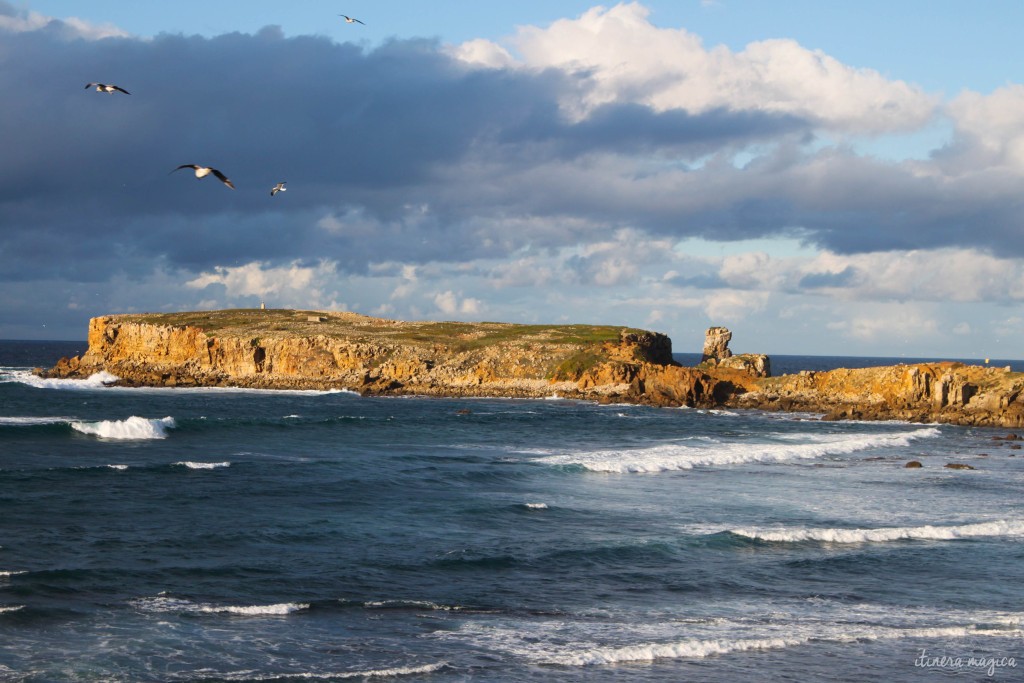
Peniche.
Algarve
The southernmost region of Portugal, Algarve, is your summer vacation paradise, with iconic beaches, beautiful resorts, and party towns which never go to sleep, such as Albufeira. The red, rugged coast is a millenary old battlefield between the friable cliff and the ocean harassing it like a possessive lover, howling from below its cactus-clad balcony.
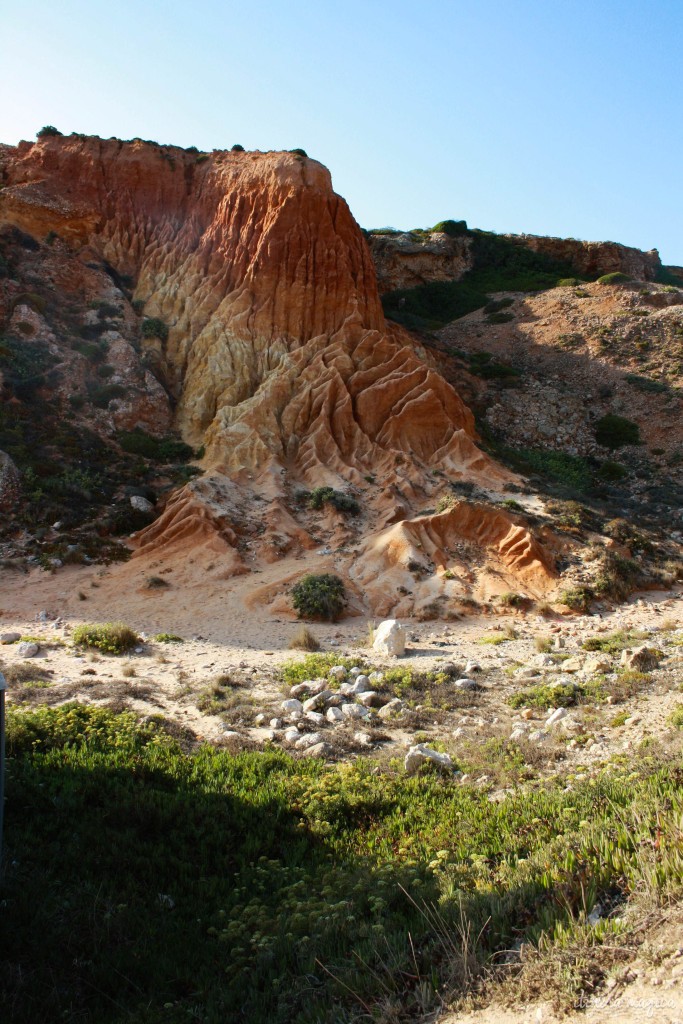
Landscapes in Algarve.
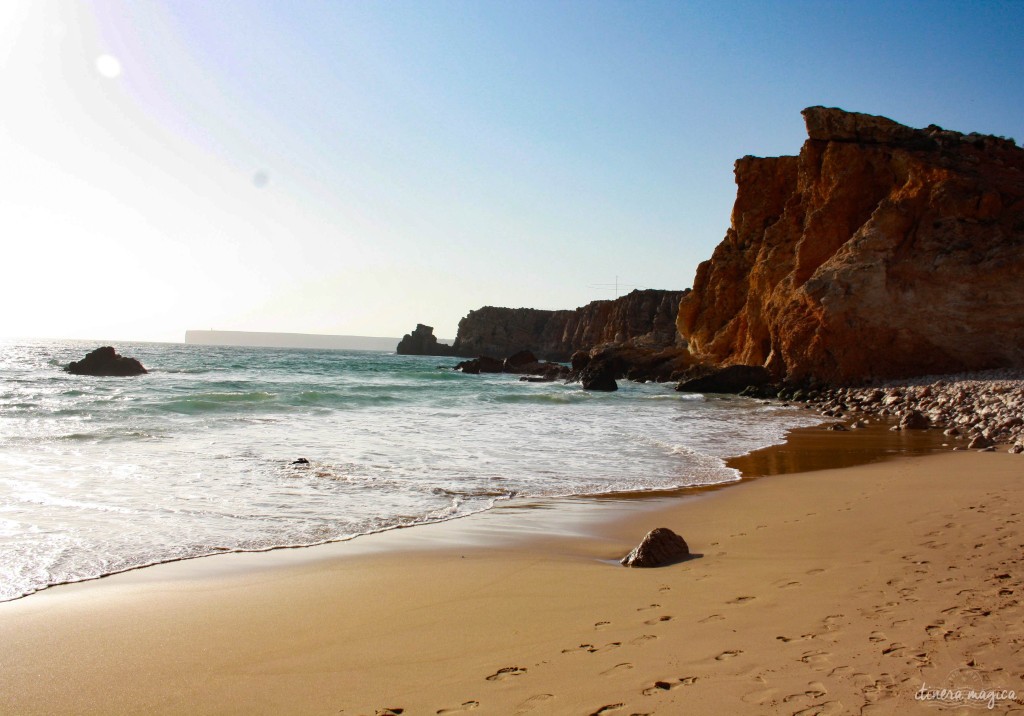
Splendid beaches.
This immemorial tale of love’s labor’s lost shapes an otherworldly landscape, filled with deep badlands, arches thrown over the waves, eerie breaches within the stone walls, and deep caves you can only reach at low tide. In those hidden refuges that you would cryptically hide with dots and crosses on a pirate map, the light comes from above, or from beneath, shining through the ochre stone or the deep blue sea. It is bathed in an eerie, translucent glow which lets the imagination run free, and fills the shore with ghost vessels or drowned brides to be, once trapped in the caves by high tide.
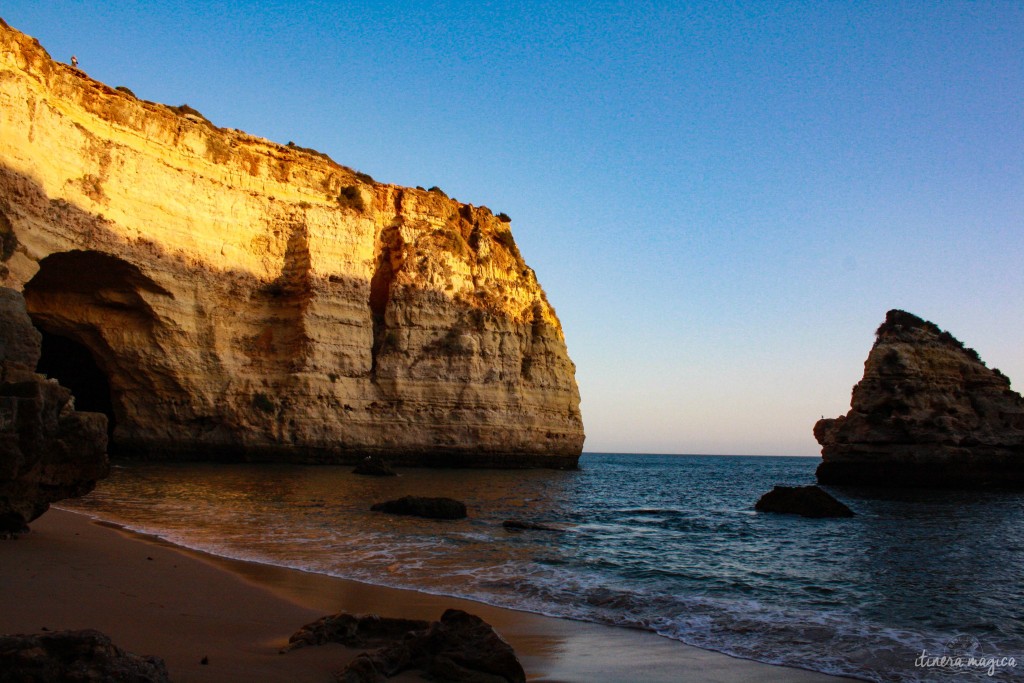
Caves in Algarve.
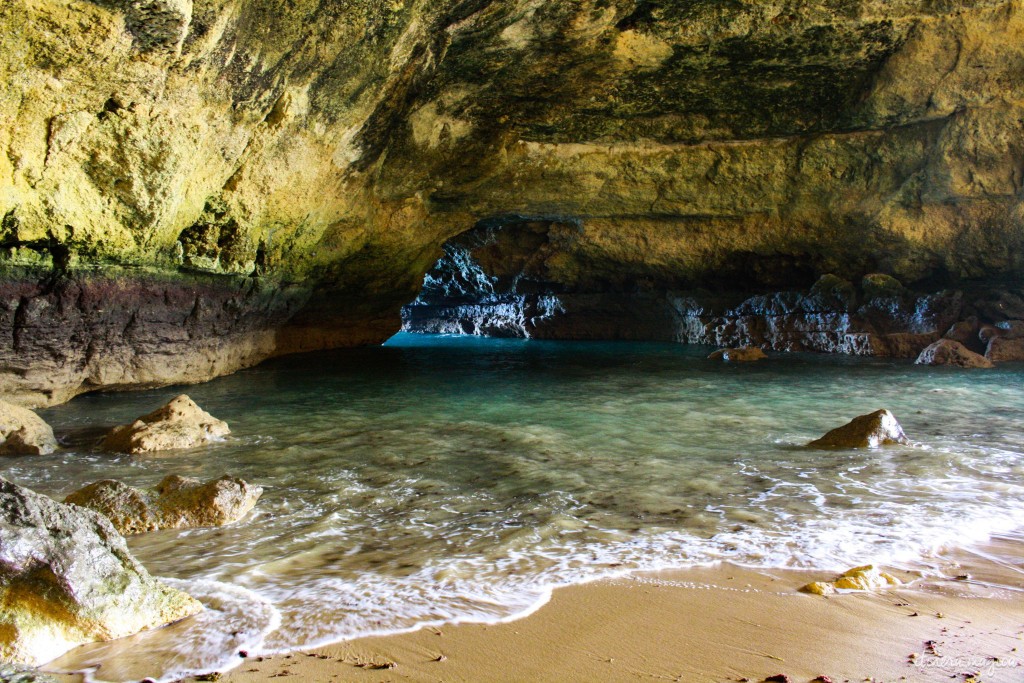
Eerie colours inside the cave.
And this eerie secret spot you’ve seen and heard of so many times, the magnificent beach hidden inside a sea cave? It’s located in Carvoeiro, and you can swim to this cave from the beach Praia de Benagil. Since I did swim to reach it, I couldn’t bring my camera with me, and bitterly regretted it, but you can see here the pictures of someone who was smart enough to come by boat.
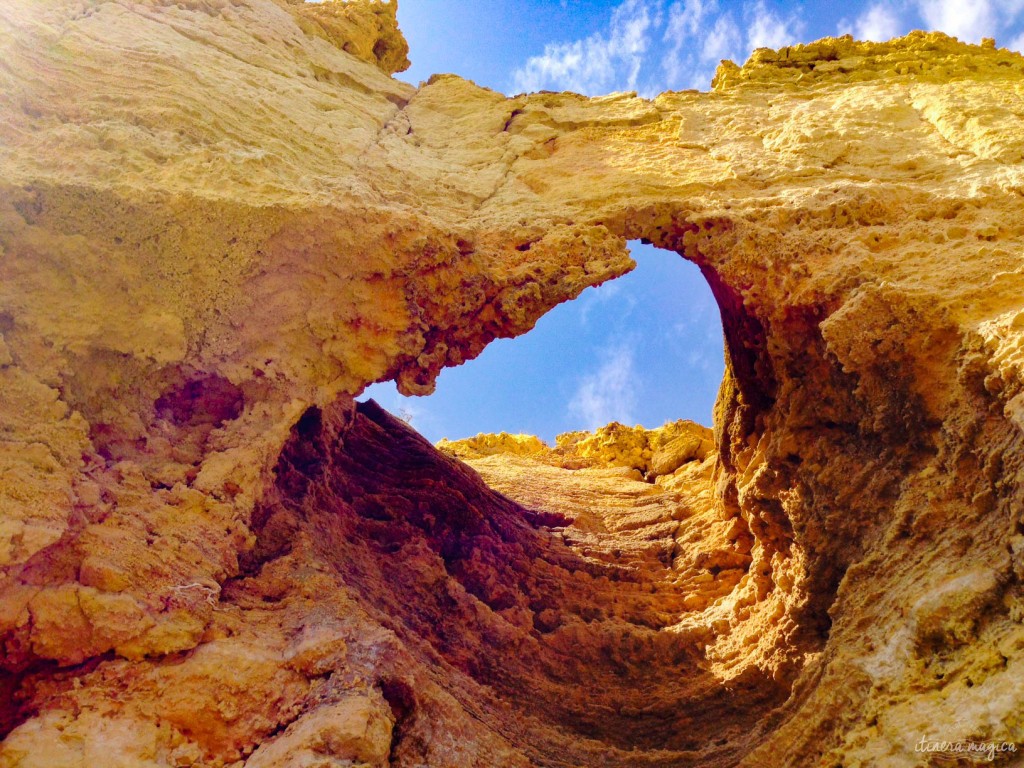
Another stunning cave on Praia Maria Luisa, in Albufeira.
Portugal prides itself in being a land of extremes, and takes great delight in collecting geographical superlatives. Algarve has two of them to offer: the westernmost extent of the European continent in Cabo da Roca, and its south-westernmost point in Cabo de Sao Vicente. Cabo da Roca’s jagged shoreline and the red lighthouse overlooking the Atlantic are a truly beautiful sight.
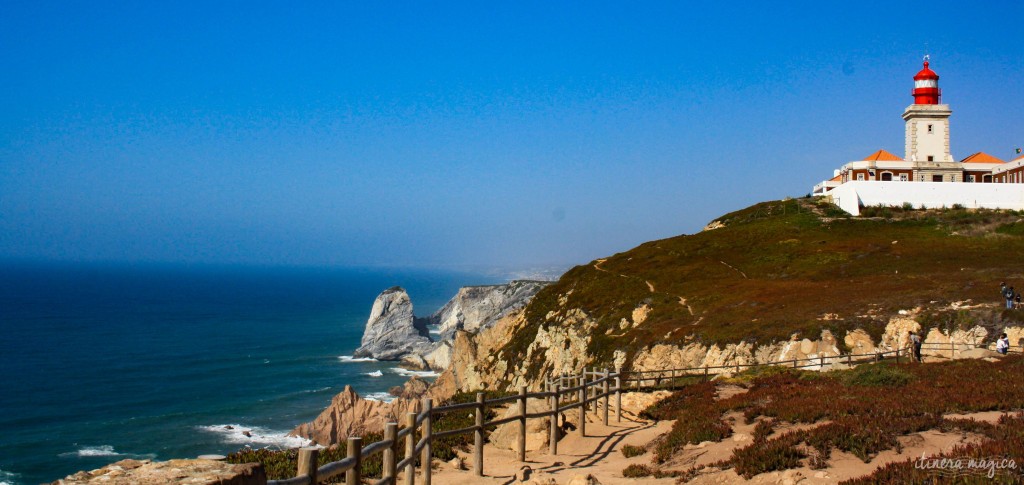
The lighthouse at Cabo da Roca.
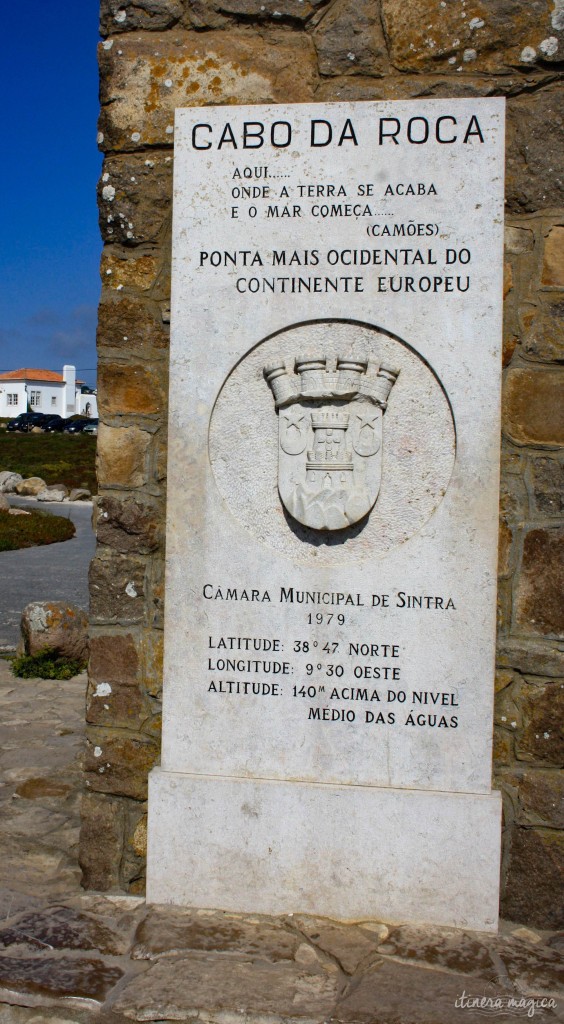
Celebrating latitudes at Cabo da Roca.
But Cape Saint Vincent, and the military fortress Fortaleza de Sagres standing on top of the promontory, touches the heart and the mind in an unexpected way. This place is a holy shrine of ancient longings, here lies the promise of better worlds and brighter suns. Old European dreams of distant shores and newfound kingdoms threw themselves from the cliffs, and leapt into the unknown. Neolithic tribes erected standing stones, the Greeks worshiped this place as the edge of the world, the place where the sun dives into the unspeakable darkness, the Vikings built altars to their Gods, and Henri the Navigator, the greatest king of the age of discoveries, had Sagres’ fortress built and made it the first school of navigators. In Sagres, where Europe dissolves into the ocean, sailors were taught about the Volta do Mar the Portuguese had discovered: the “turn of the sea”, the whirling winds and mighty streams of the Atlantic, now deciphered as a key one had to possess to unlock the mysteries of the ocean and set sail for the new world.
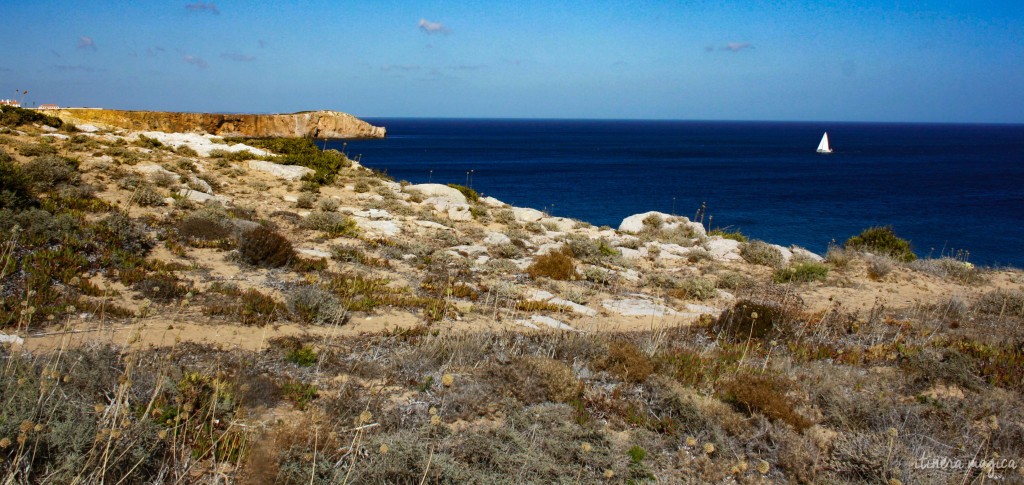
Boats off the coast of Sagres.
A great wind rose has been drawn on the cape’s plateau, leading you up to the edge of the world, and you can follow the lines set out by the compass through fields of wild flowers, agaves and thistles. When the waves batter the cliffs, they seem to carry whispers drifting from distant shores, or from very ancient times.
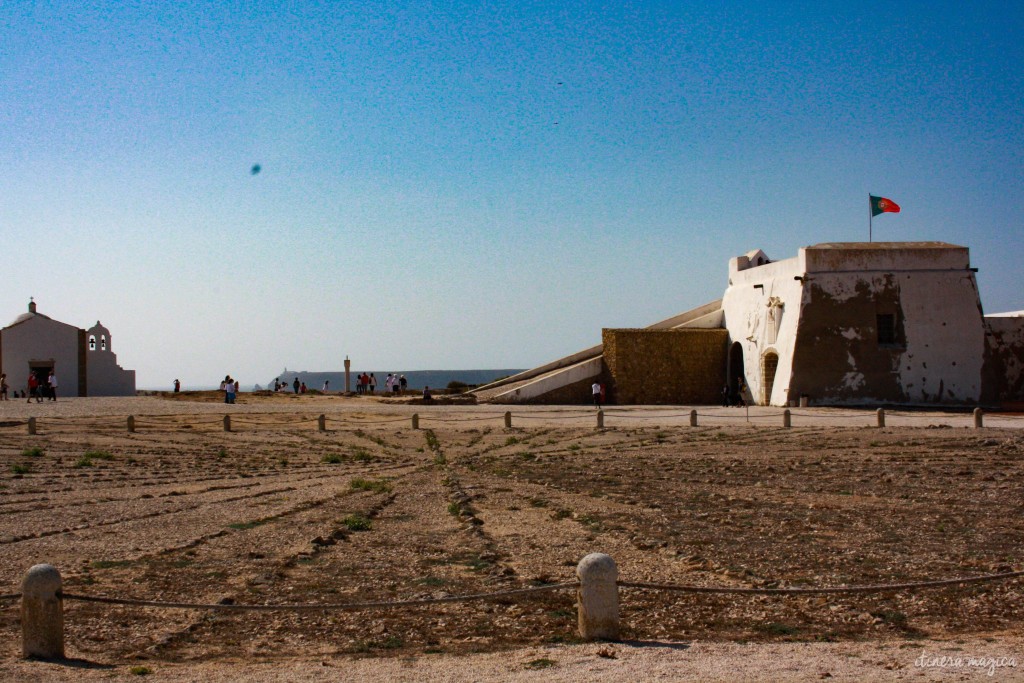
Windrose in Fortaleza de Sagres.
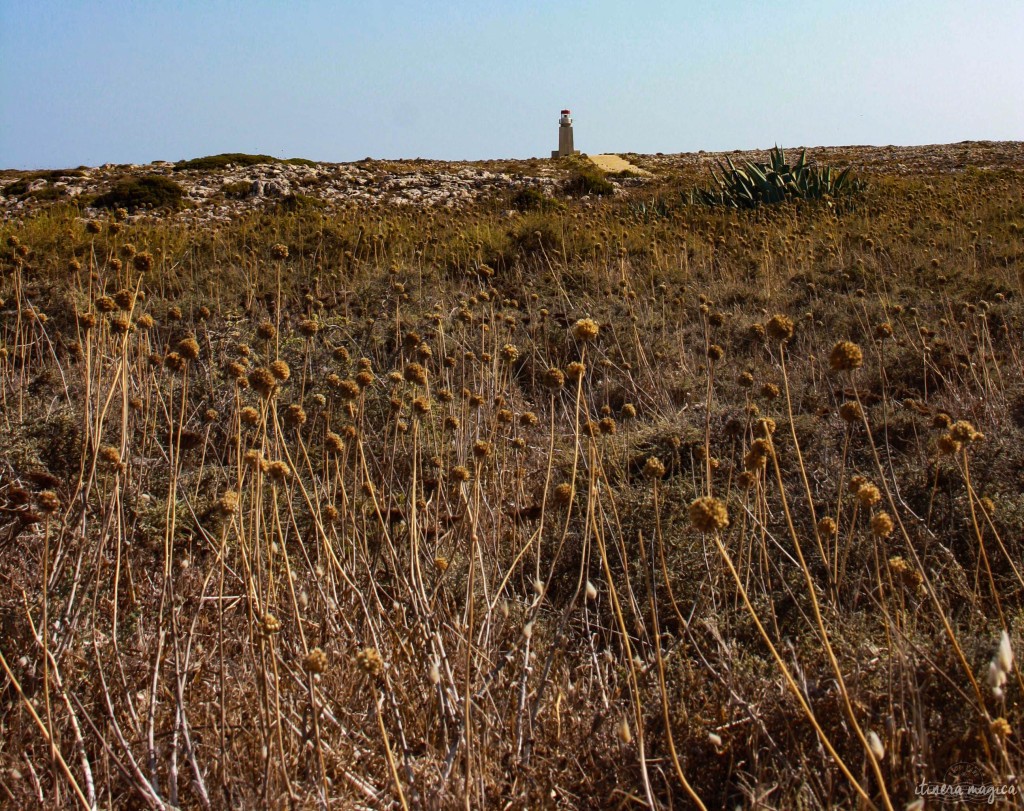
Walking among the flowers to the edge of the cliff.
At this point, I believe an important precision must be made: I am well aware of the outcome of the age of discoveries for the lands which were invaded. On the French version of this blog, I wrote here about the fate of Native American people in the Southwest of the U.S., and here about the struggle of Native Hawaiians to keep their culture alive. I would never condone nor glorify colonialism, and I am painfully aware of what we, Europeans, have done to the world. But I have always dreamt of ships, adventures and mysteries, and this is what you see and feel in Portugal – the everlasting longing for the open sea. This is a European paradox I have to live with: admiring the sailors, the crew of those tiny caravels, thrown like nutshells in the terrifying storms of the Atlantic, but understanding the consequences of their endeavors for these “new worlds” they desecrated and damaged forever.
On another occasion, I visited friends in Baiona, Spain, a little town which lies further north on this very coast, about 25 miles north of the border with Portugal. On March 1, 1493, the Pinta arrived in Baiona. It was the first of Christopher Columbus’ ships to return from overseas and tell Europe about the new world, its hulk filled with crops, fruits and vegetables no one had ever seen before. A replica of the caravel has been built in Baiona’s harbor, and one can see and feel how tiny and frail it was, what an exploit this crossing meant. But maybe it should have never come back. Maybe it should have been lost at sea, and the secret of the new world buried with it in its unfathomable depth. I still struggle with our history – with the greatness and the shame.
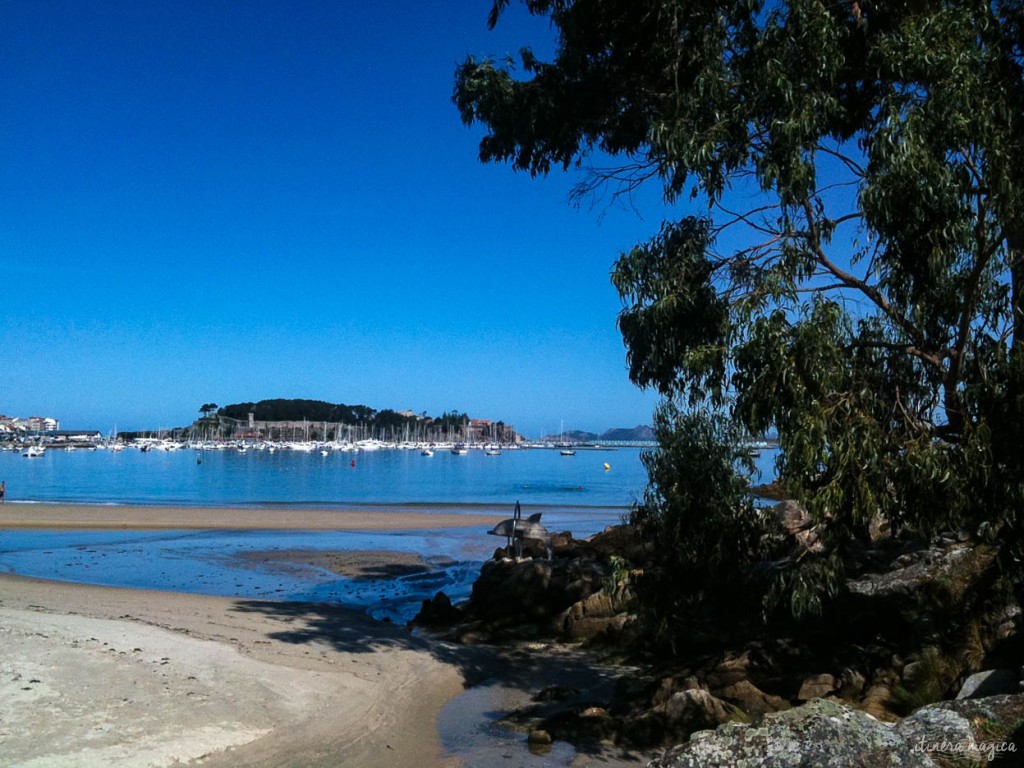
Baiona’s harbor and fortress.
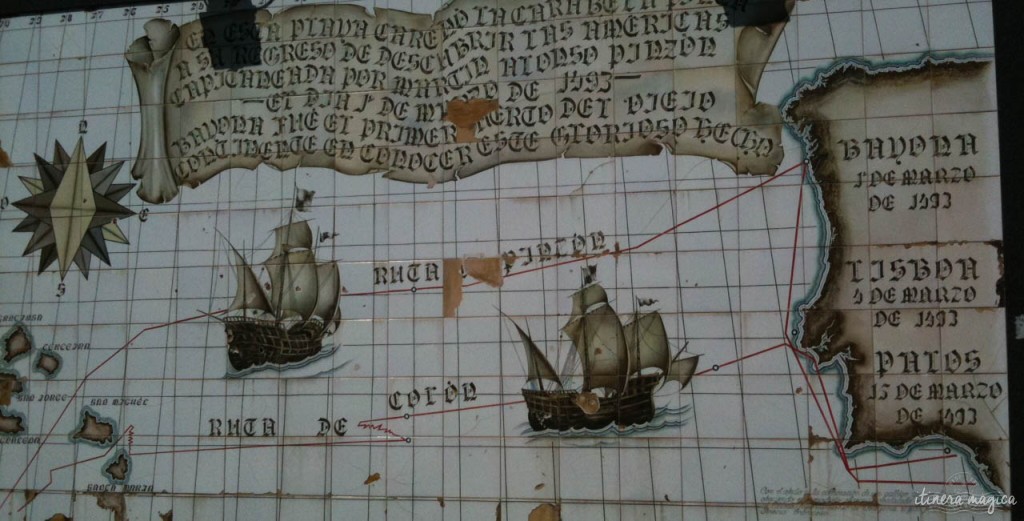
The Pinta’s voyage in 1492-1493.
Alentejo
My most vivid memory of Alentejo, the region south of Lisbon, is a boat ride I took in Setubal’s harbor. As soon as we had reached the open sea, suddenly they were everywhere, springing out of the waves and dancing beneath our hull, executing a fleeting ballet in groups of three or four, in the morning light. Bottlenose dolphins, maybe six or seven of them. I thought of the poet Arion, thrown by pirates into the sea after he sang his swan song – legend has it a dolphin heard his melodious voice, and brought him safely back ashore. You can almost believe it, when you behold those joyful, curious, playful creatures, who seemed to enjoy our cries of admiration.
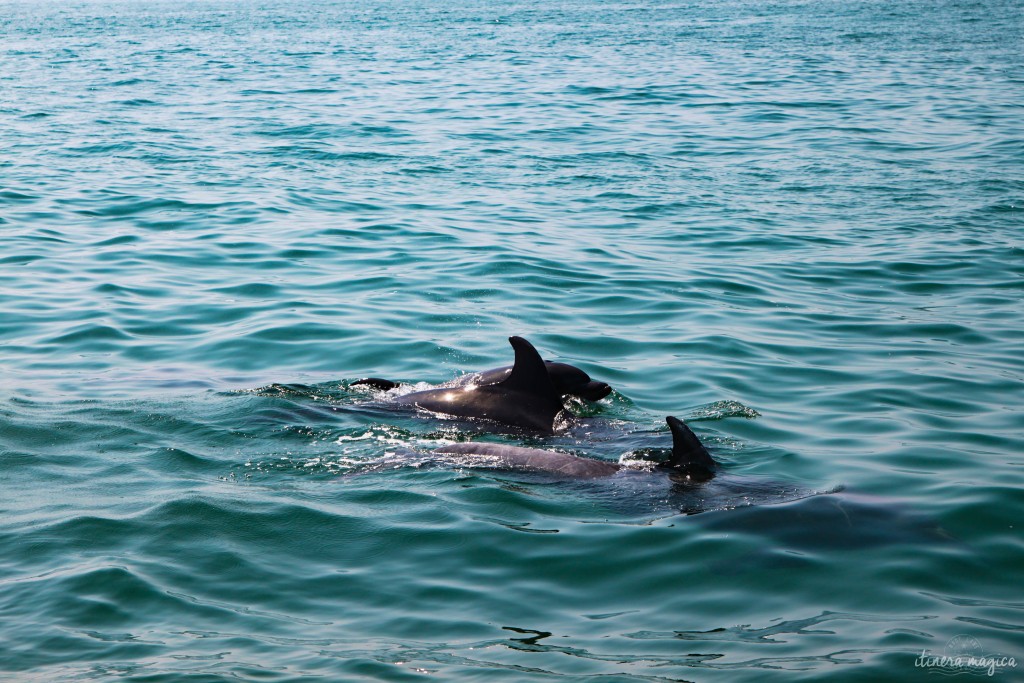
Dolphins in Setubal.

Playful dances.
Lisboa
The capital region is famous not only for the magnificent city which gave it its name, but also for Cascais, its enchanting beach resort. One of the most interesting tourist attractions is Boca do Inferno, where the ocean gushes inside the cliff through a hollow breach, pounding against the stone like a mighty drum. On stormy days, the swell fills the chasm entirely, transforming the coast into a monster out of the old ages, with foam dripping from its hellish mouth. You may see a video here.
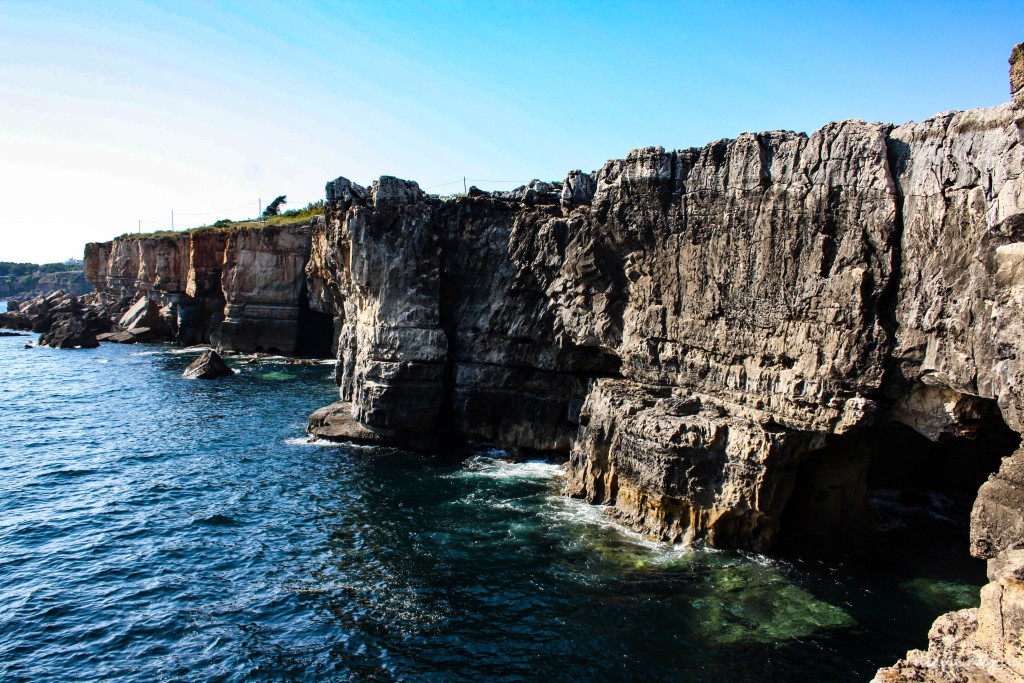
The underwater cave which forms the opening of hell’s mouth.
The coast north of Cascais is also home to one of the most beautiful hotels I’ve ever seen, the Fortaleza do Guincho, a 17th century fortress turned into a five-star palace, standing alone on a rocky overhang above the wild wild sea. This place is worthy of turning even the coldest heart into a hopeless romantic – go there with the love of your life, or with the love that never could be, propose to someone or entangle yourself in the most heart-wrenching affair a novelist could think of, feel the sound of the sea reopening all your poetic wounds, and sleep under a canopy bed in a magnificent dim-lit room which looks like a painting. I will break all my vows if you take me there.
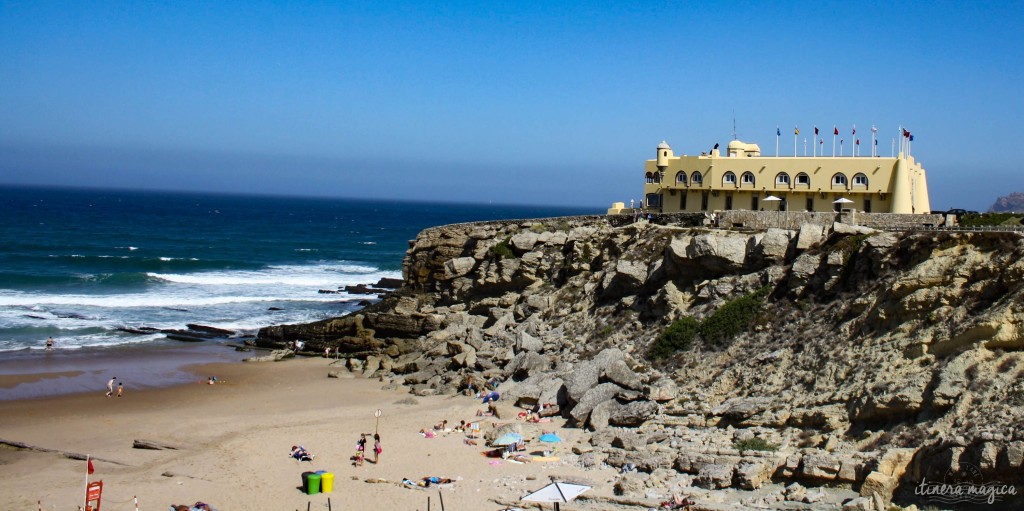
Fortaleza do Guincho.
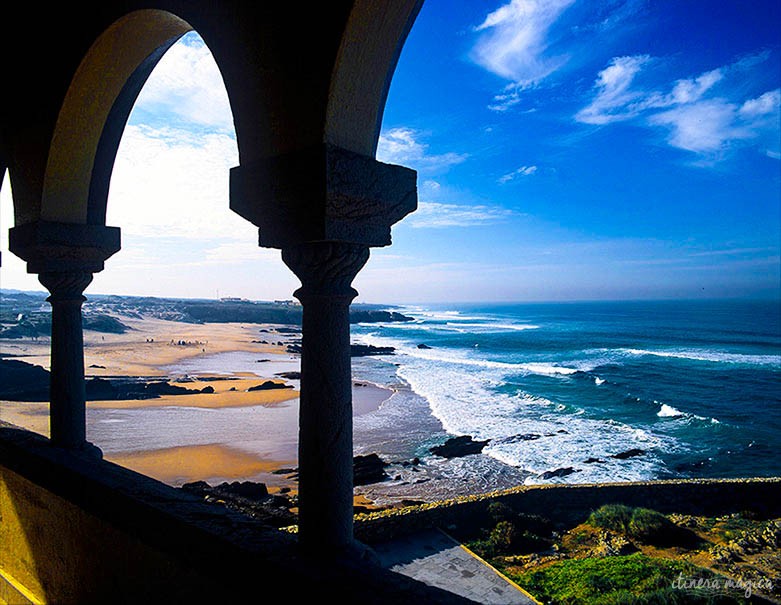
Inside the fortress.
Centro
There is a place, in the region of Centro, and as soon as winter comes, I must think about it all the time: Nazaré. I drove through Nazaré without stopping once, but it was in the summer time, and only winter turns this fishermen’s village bearing a holy name into the infernal majesty which made it famous. The highest wave ever surfed crashed on its shore – it towered at nearly 34 meters (111 feet) and was ridden by Garrett McNamara during a mighty winter storm. You can see the footage here – I’ve watched this video maybe ten times.
I have always been obsessed with big wave surfing. I was six or seven when I discovered the picture of Laird Hamilton surfing Jaws (Maui, Hawaii) in a magazine, and I started collecting everything I could find about giant waves and the heroes daring them ever since. Unfortunately, I have never been a surfer myself, unless clumsy attempts during summer vacations on the Atlantic coast do count – I am a child of the Mediterranean, and good surf break isn’t that common on “my” beaches. In the last years, a great new passion has sparkled in me: stand-up paddle. This beautiful sport, invented by the ancient Hawaiian, enabled me to surf even on calm, nearly flat seas, and to ride out in the gorgeous bays of Saint Tropez or Le Lavandou, much swifter as if I had been walking, discovering the coastline in a way I had never experienced before.
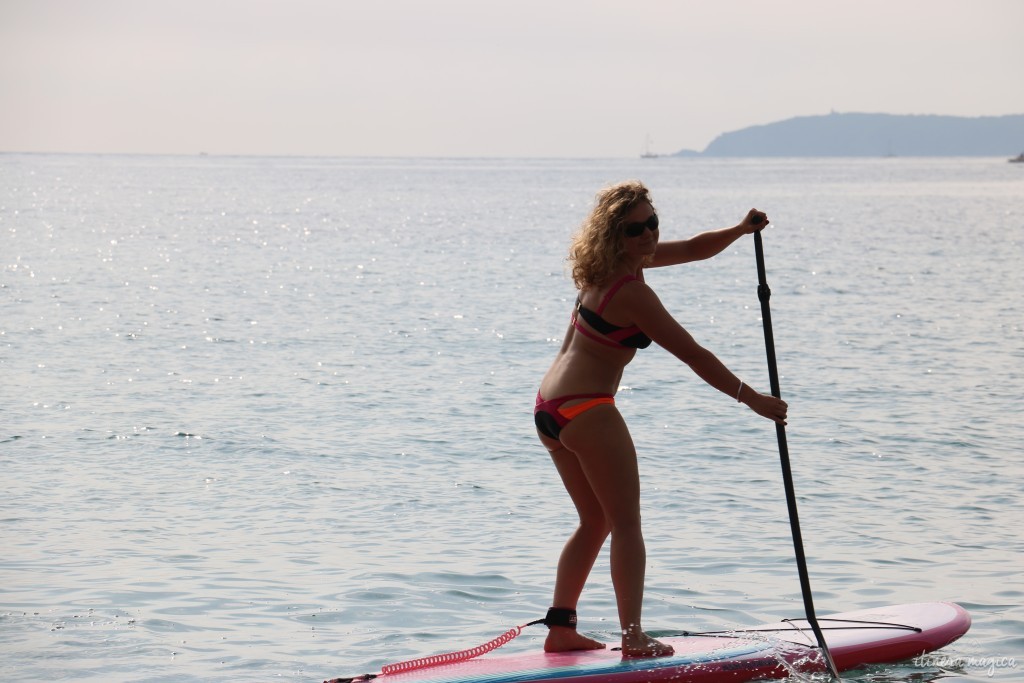
Happy SUP session in Le Lavandou.
But my fascination for big wave surfing is unquenchable. And I know it: one day, when high surf will be predicted, I will take a flight to Lisbon and drive all the way to Nazaré, to stare in awe at the mighty gods of the sea.
Peniche is also a famous surf spot, often compared to Oahu’s Northshore for its powerful tubes, but this isn’t what brought me there, on a melancholic November day when I needed to be healed by the sea. To be honest, I don’t know what did. But suddenly I found myself in Peniche, hundred kilometers north of Lisbon, alone to face the raging ocean, and I remember it as one of the most sublime visions I have been blessed with.
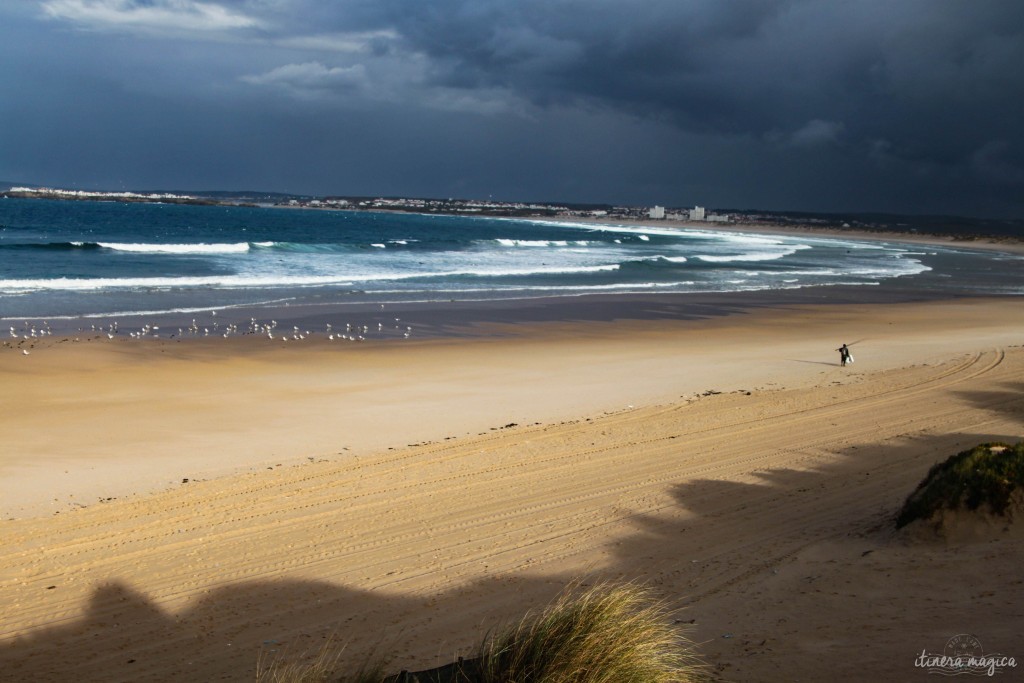
Peniche’s beach.
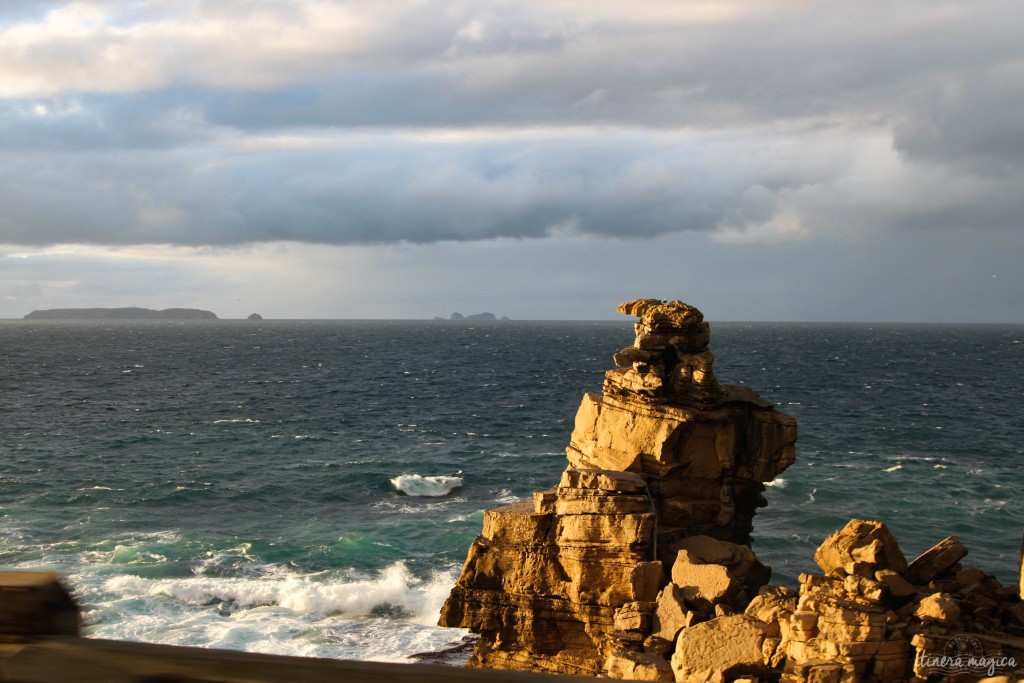
Dramatic light.
High surf was rolling in, throwing itself at otherworldly rock formations I wish I could describe in a geologically correct manner – deep cracks ran through the high cliffs and made them look like a giant puzzle of stapled stones, and round rocky ponds seemed to have been cut in lace. A wooden cross was erected on the highest peak, by turns shining bright in the dramatic light of a stormy sunset or swallowed by the shadow of dark-grey clouds, and it felt like a movie scene, as if I were living someone else’s life for a brief, glorious moment.
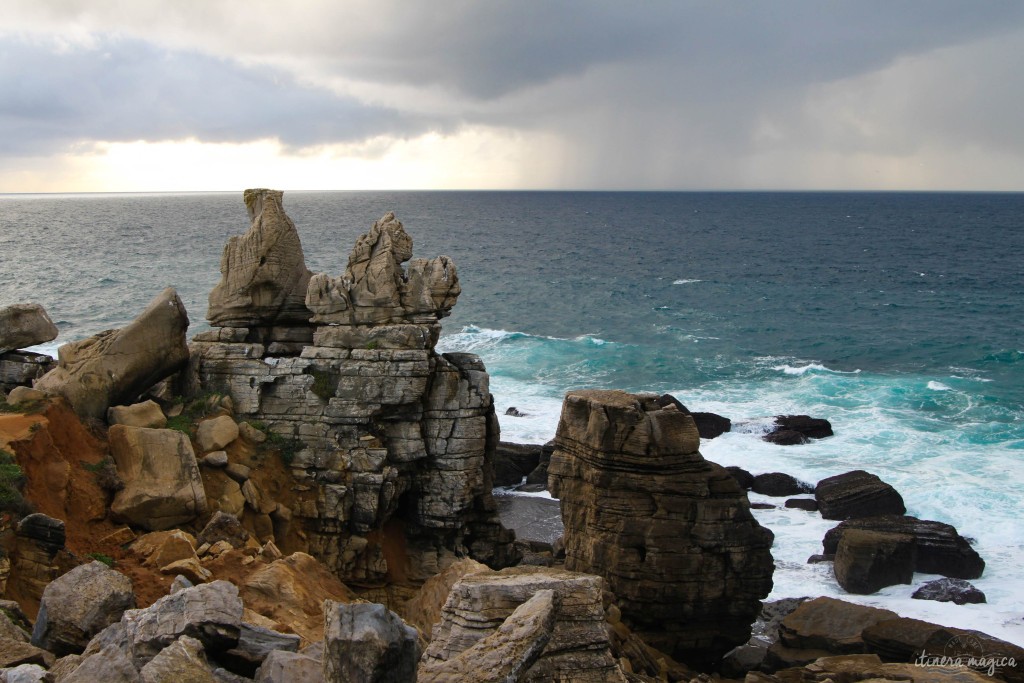
Geological wonders of Peniche.
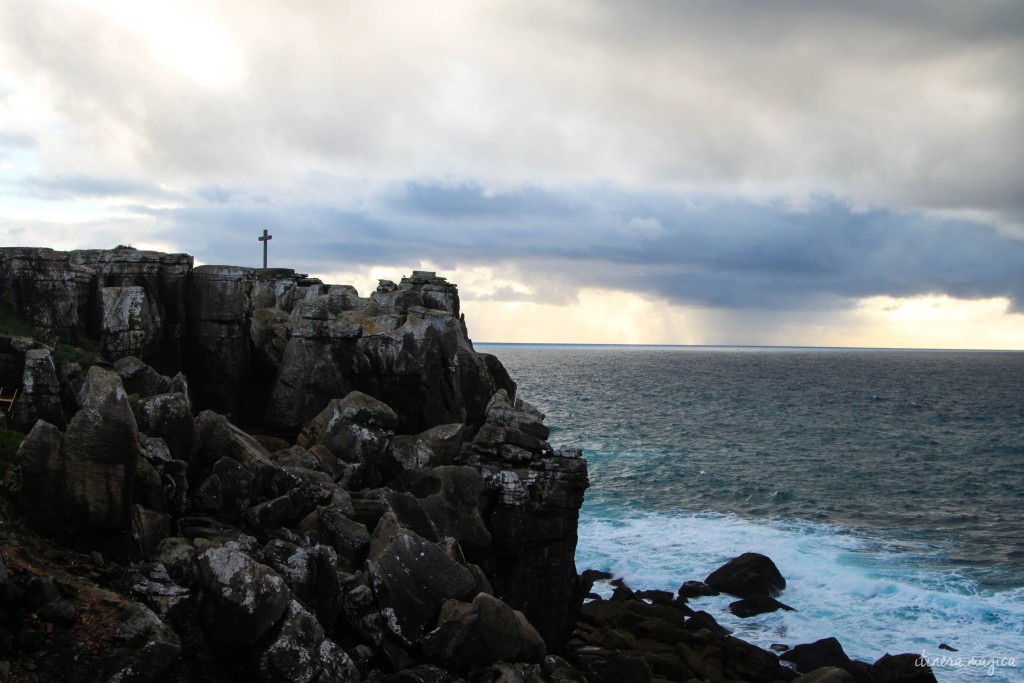
Biblical visions.
I had been in such a Faustian setting once already, in Scotland, the land of darkness and light. I felt as if I had found its symmetrical country, the Scotland of the south, also shrouded in catholic mysticism and incurable nostalgia, covered in ruins and haunted by the sea, clinging on to the myths and legends of bygone eras, lulled by the promises of distant horizons.
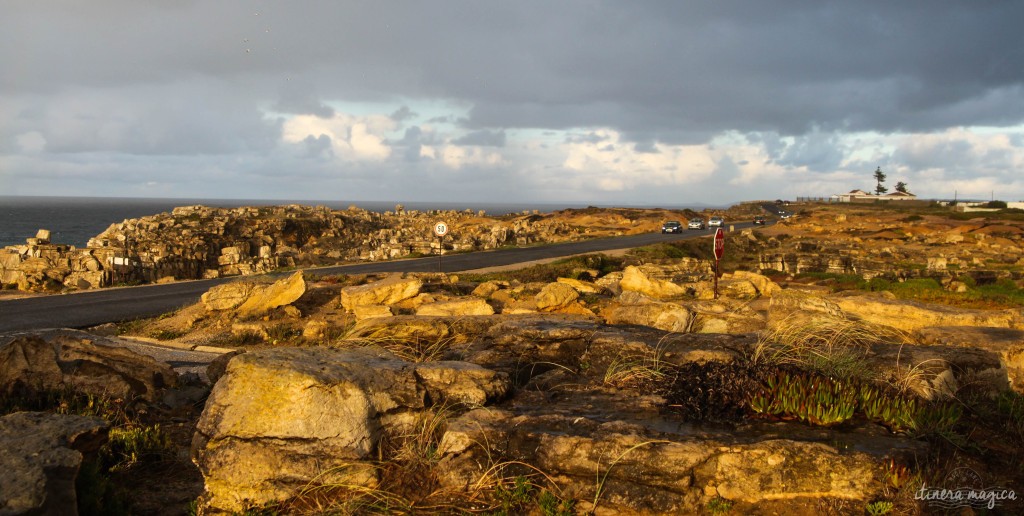
Sunset.
There was a little blue and white church by the cliff, and old women were praying to maritime saints in a sea of burning candles, which flickered when strong gusts hit the outside walls. The air was saturated with fire and fervor.
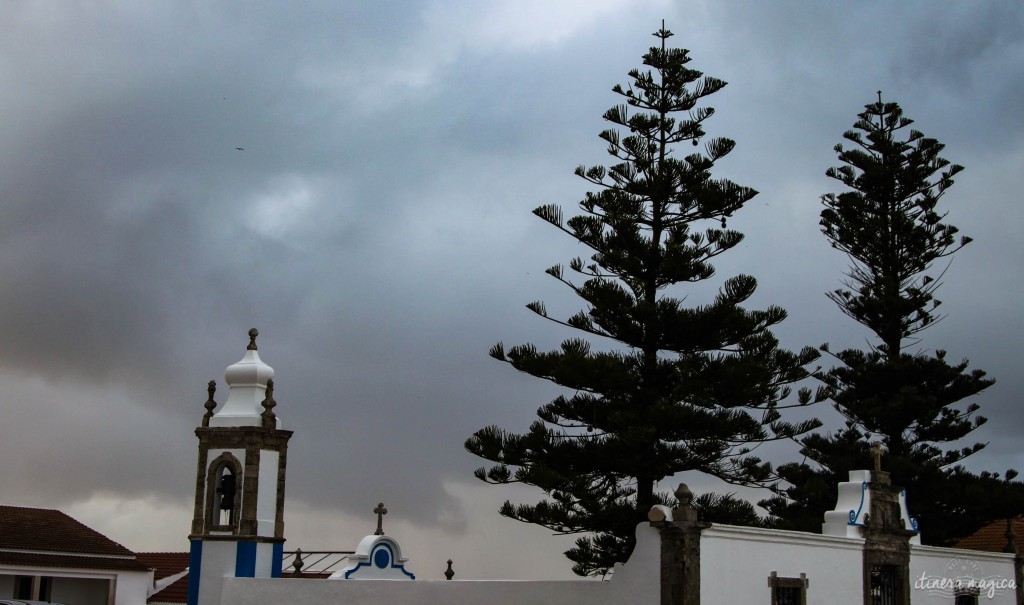
Little church.
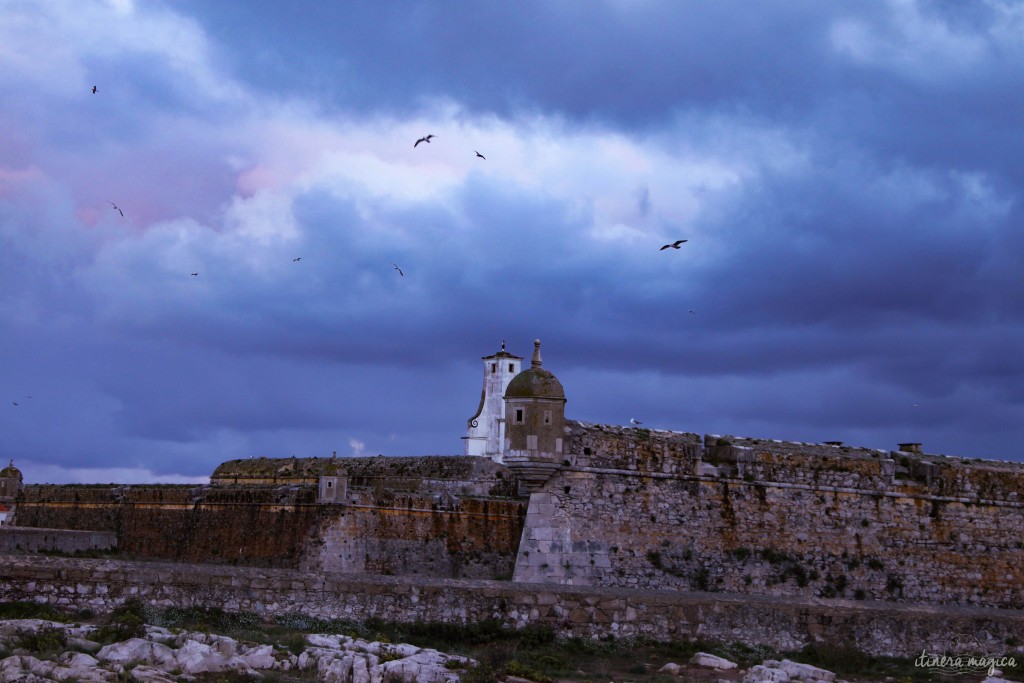
Historic fortifications.
Then the purple dusk came, the sea receded, opening mirrors on the bare foreshore, which darkened quickly, and it was night.
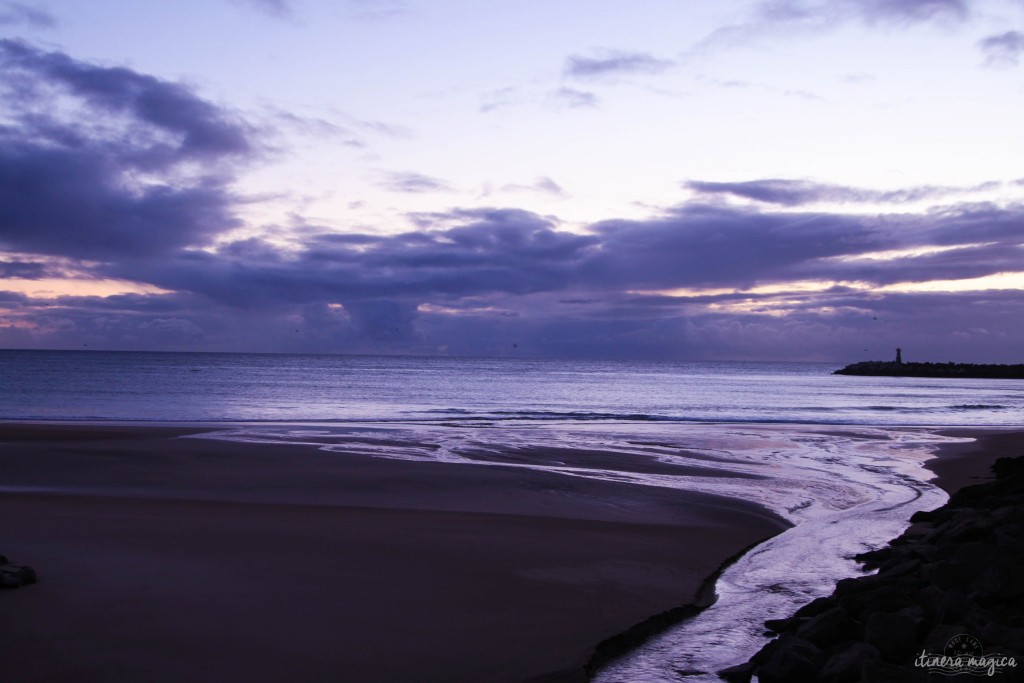
Nightfall.
On that day, Peniche felt incredibly solemn and magic – the spirit of Europe gathered on this craggy coastline. It was the kind of place which could make you cry, bend on your knees and pray, or fall in love. There is this beautiful word in the Portuguese language, saudade, and one can never translate it properly: saudade means tender sorrow, enduring longing, bittersweet nostalgia. But it permeates every chasm, every cave, every beach on Portugal’s coastline, and like the sand in your shoes and the sun rays in your eyes, it will follow you home after you leave.
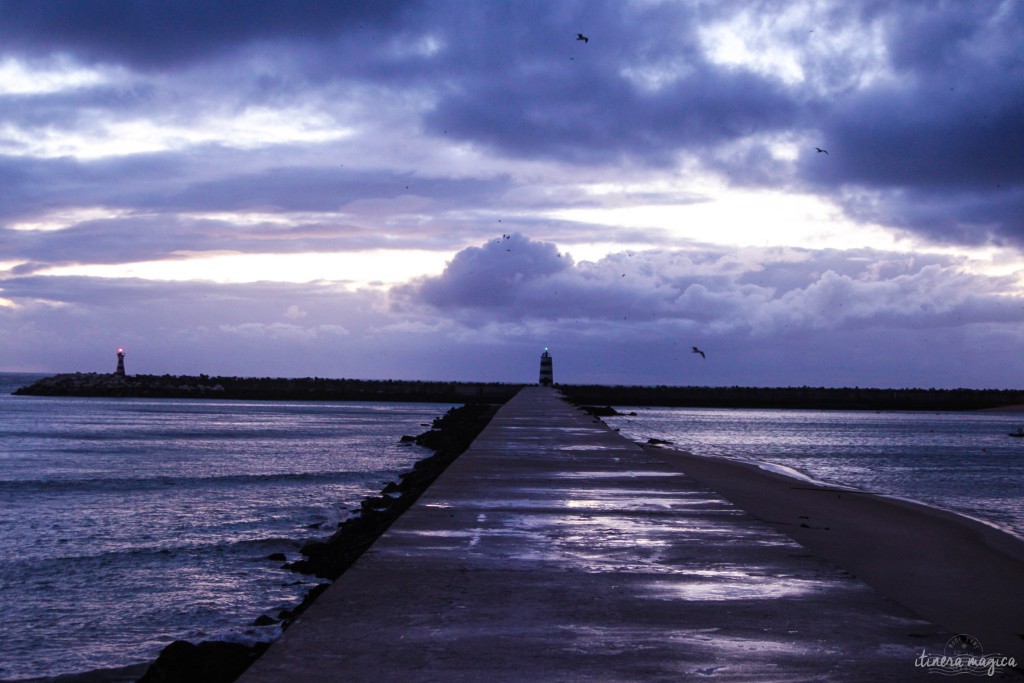
Evening calm.
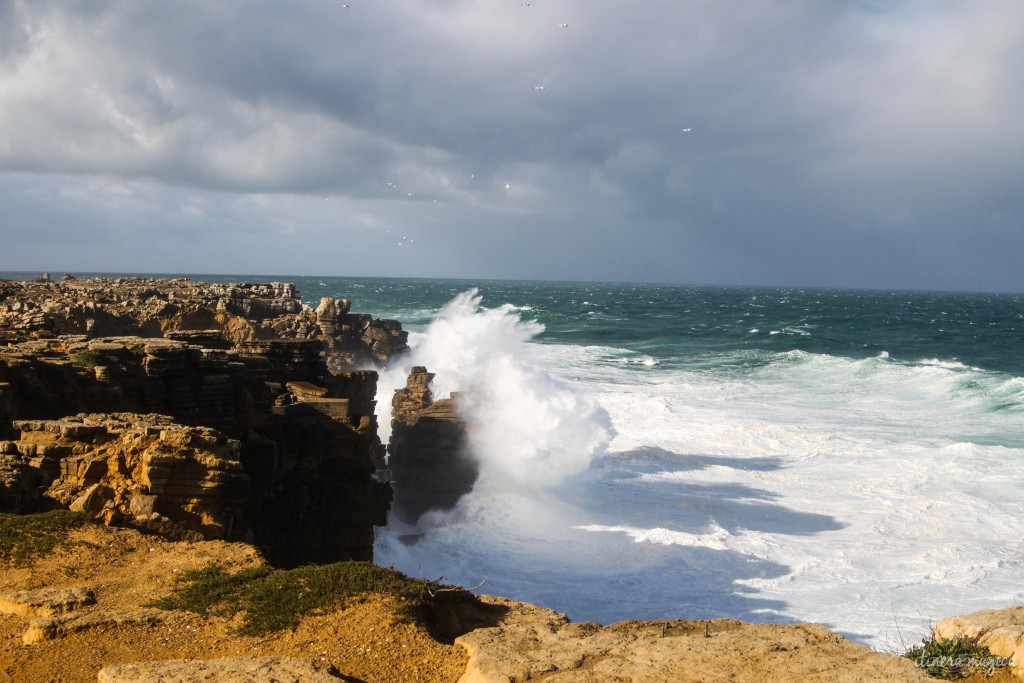
Crashing waves.
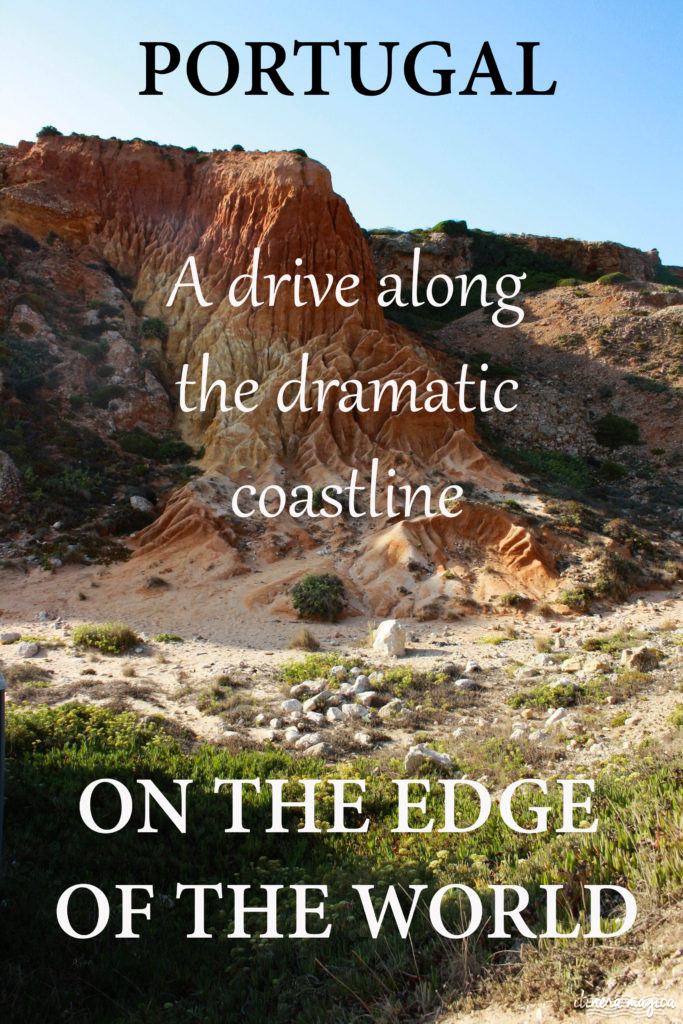
Pin me !
Did you enjoy this post?
Please share it or pin it!
-
To keep track of Itinera Magica’s travels, please like our Facebook page Facebook
or subscribe to our newsletter
Thank you for your support, and see you soon!





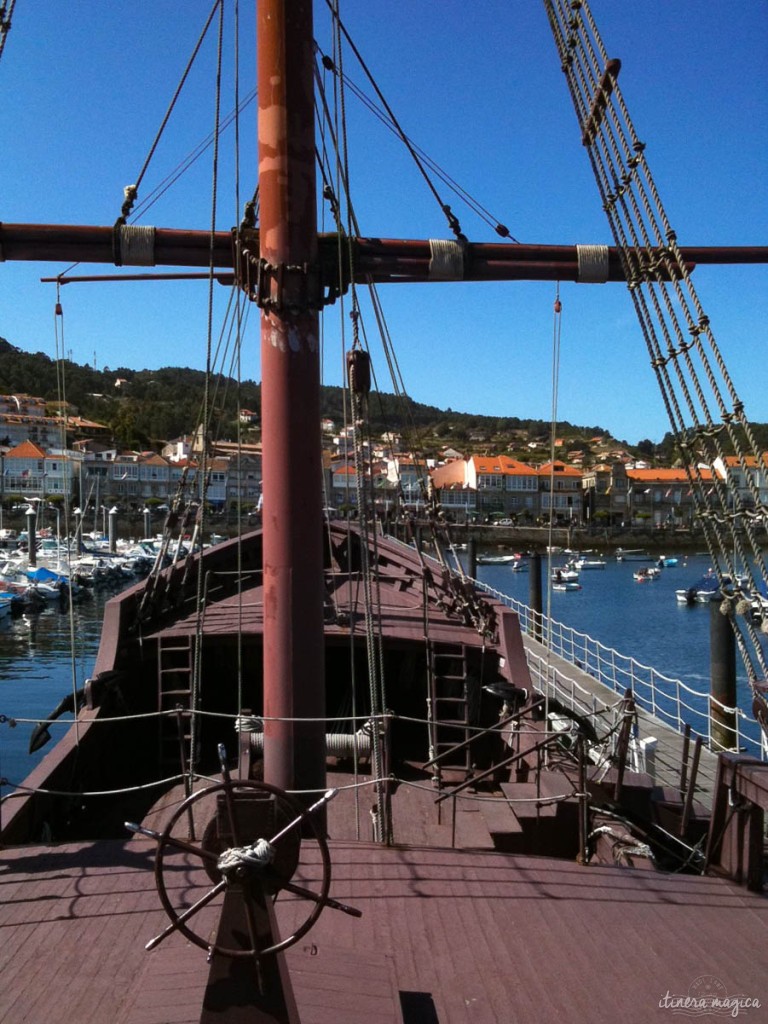















le 30 December, 2015 à 2 h 27 min a dit :
I spent a month in Portugal three Christmas’s ago. I was on the tail end of a much longer trip through Northern Africa and I remember having very few expectations. Several medieval castles, incredible archaeological sites, sumptuous rotisserie chickens, and too many beaches to count later…I was completely head over heels for this ruggedly beautiful country. Fantastic post, and great photos as always! xo
le 30 December, 2015 à 4 h 13 min a dit :
Thank you so much, Jordana! I feel exactly the same: there’s a strange power to Portugal… I am completely in love with the atmosphere, landscapes and culture of this country.
le 18 April, 2016 à 19 h 44 min a dit :
Planning to go on a road trip on the coast of Portugal this summer, so we will have your article in mind! Very useful information, thanks for sharing!
le 22 April, 2016 à 8 h 16 min a dit :
I am very happy you enjoyed it! I will head out to your blog now 🙂
le 21 October, 2016 à 21 h 02 min a dit :
Portugal is a dream of mine! Your pictures are making me want to hop on a plane and go now!
le 21 October, 2016 à 21 h 22 min a dit :
Thank you, dear Claudia! I think you would really love Portugal. Dramatic landscapes, kind people, warm weather, it has it all!
le 17 January, 2017 à 9 h 27 min a dit :
[…] adorée il y a quelques années, lors d’un voyage qui s’est poursuivi à Lisbonne et sur la côte portugaise, de l’Algarve à Porto. Je crois que Séville est, à ce jour, la ville espagnole que j’ai le plus aimée et qui a […]
le 2 April, 2017 à 9 h 57 min a dit :
So glad I found your site!!! I’m heading to Portugal next week and this is great information to know! Did you go to the Azores? I’m trying to make it there as well!
le 4 April, 2017 à 13 h 29 min a dit :
I have absolutely adored the Azores! You will love it!
le 13 August, 2021 à 1 h 02 min a dit :
excellent as well as amazing blog site. I actually want
to thank you, for providing us better details.